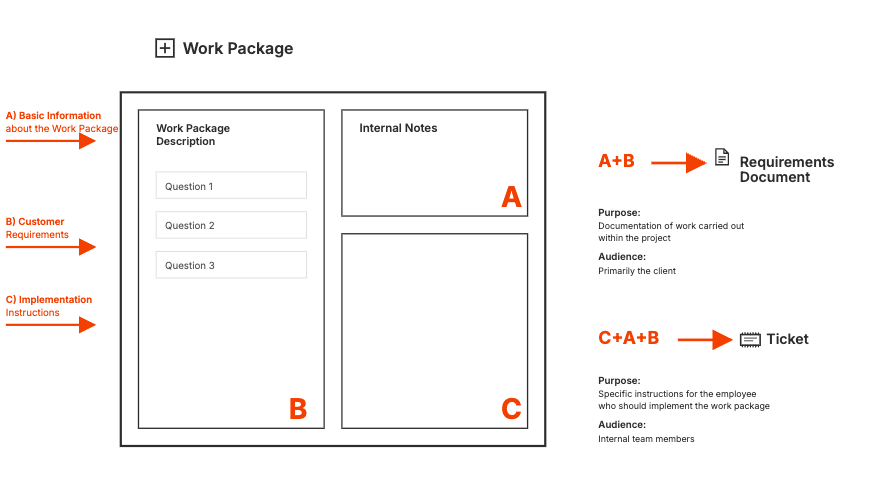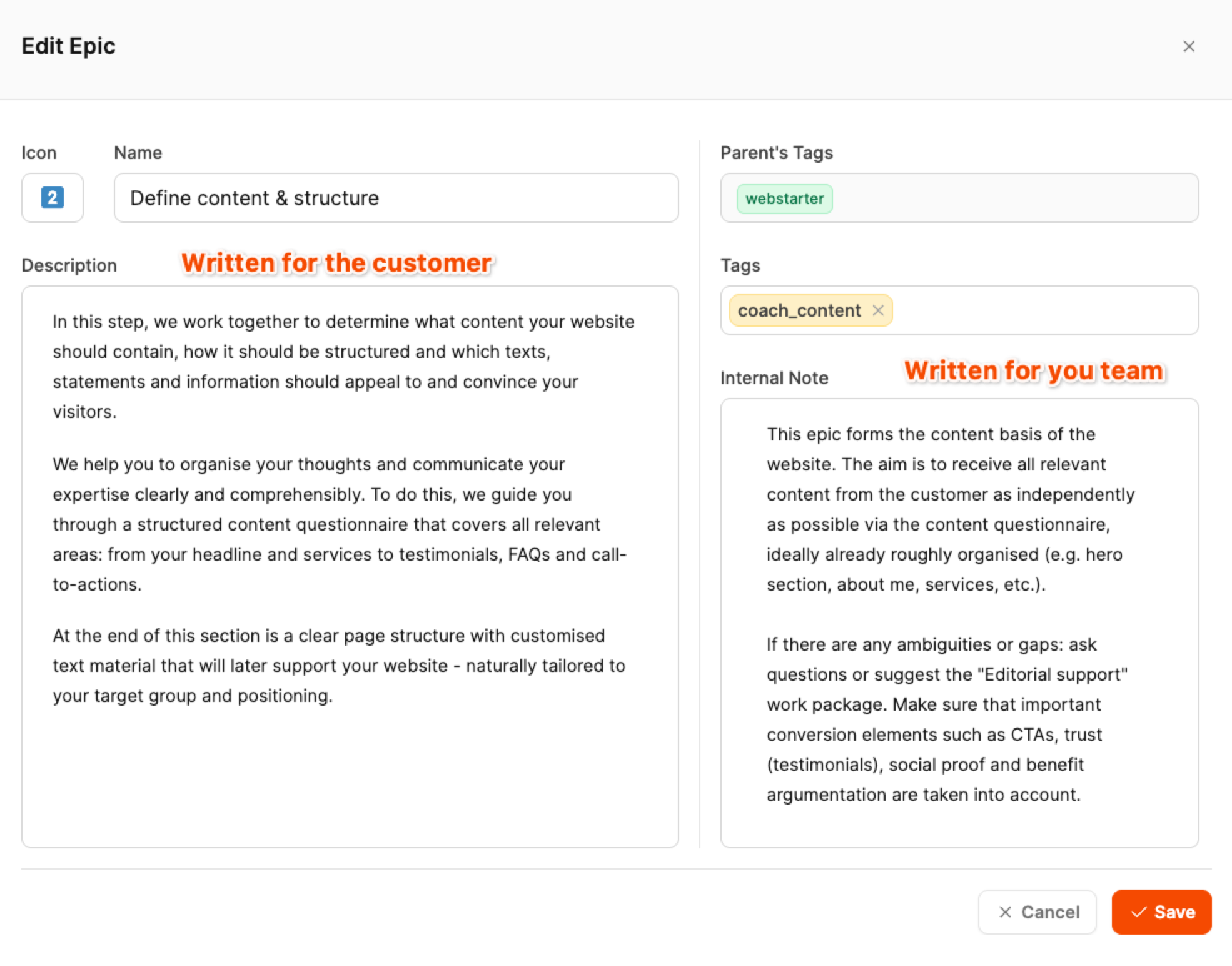Internal notes are part of every work package in a project component. They’re used to give clear hints and instructions to team members when carrying things out. While the description and customer requirements go into the specification document, internal notes are only aimed at the internal team.
Project components structure recurring projects and make it easier to hand things over from planning to execution. Each work package usually has three sections:
Description: What needs to be done in the work package
Customer requirements: Which individual requests need to be kept in mind
Internal notes: How the task should actually be carried out

After the specification is approved, the work packages get turned into tickets. That’s where internal notes show up so people working on it have the context and get clear instructions for what to do.
Internal notes exist for these objects:
Components
Epics
Work packages
To-do lists
Acceptance checklists
The building blocks of project components

This example shows how description texts and internal notes speak to different audiences — like the customer on one hand, and your own team on the other.
The description explains to the customer what will be done in this work package and what the benefit is for them.
It is part of the specification and forms the basis for the later offer or service description.
For example:
“In this step, we work together to determine what content your website should contain, how it should be structured and which texts should appeal to your visitors.”
 Goal: The customer understands what purpose is being pursued and what the result of the work package is. The tone is explanatory, service-oriented, and focused on customer benefit.
Goal: The customer understands what purpose is being pursued and what the result of the work package is. The tone is explanatory, service-oriented, and focused on customer benefit.
The internal note is intended solely for the internal project team. It contains specific work instructions, checkpoints, or notes on how the work package should be carried out.
For example:
“The aim is to receive all relevant content from the customer as independently as possible via the content questionnaire […] If there are any ambiguities or gaps: ask questions or suggest the ‘Editorial support’ work package.”
 Goal: The team knows how to proceed, what to pay attention to and when questions are necessary.
Goal: The team knows how to proceed, what to pay attention to and when questions are necessary.
The tone is pragmatic, precise, and internally focused.
Description: For the customer → explains what is being done and why.
Internal note: For the team → explains how it should be done.